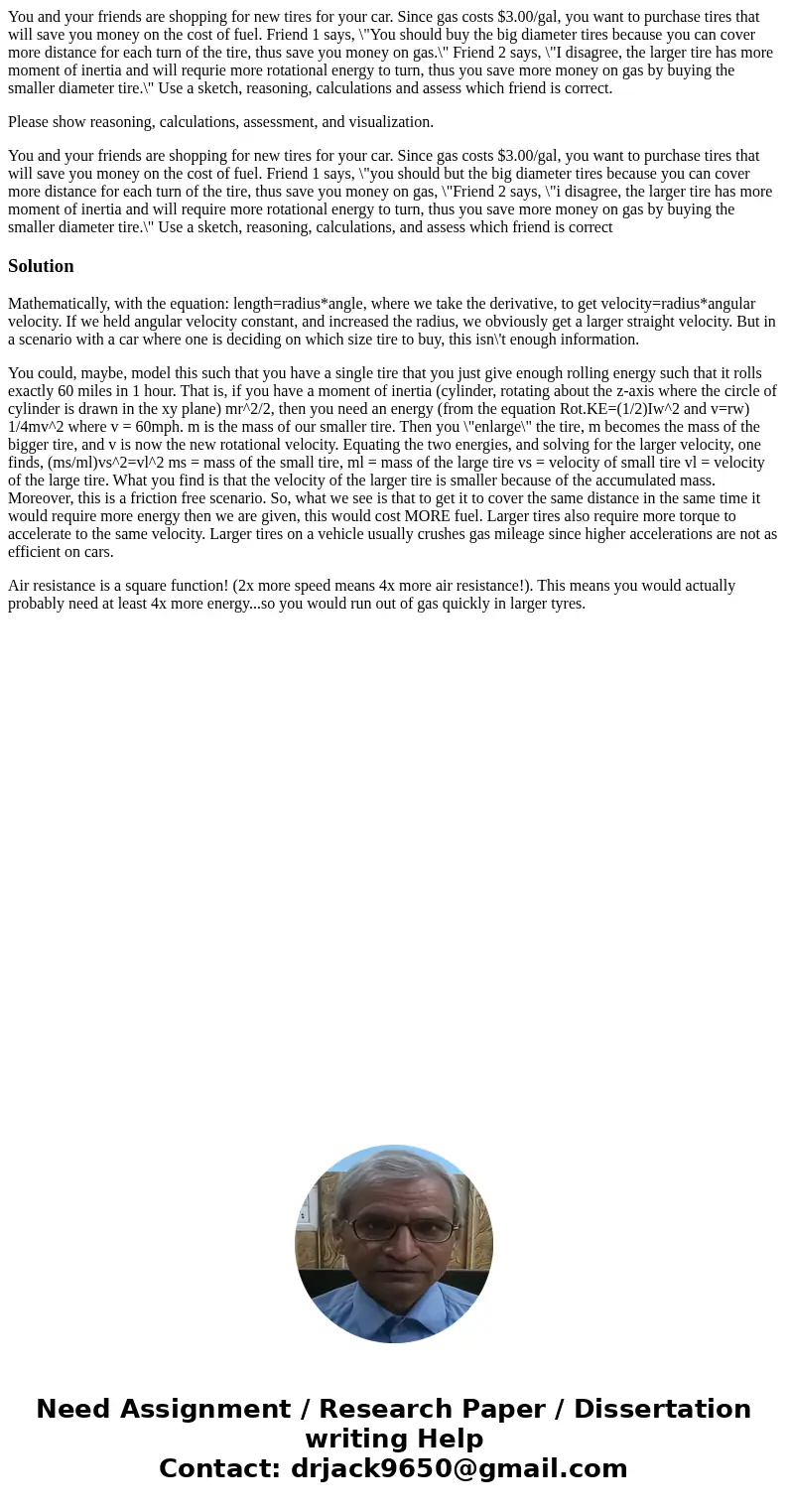You and your friends are shopping for new tires for your car
You and your friends are shopping for new tires for your car. Since gas costs $3.00/gal, you want to purchase tires that will save you money on the cost of fuel. Friend 1 says, \"You should buy the big diameter tires because you can cover more distance for each turn of the tire, thus save you money on gas.\" Friend 2 says, \"I disagree, the larger tire has more moment of inertia and will requrie more rotational energy to turn, thus you save more money on gas by buying the smaller diameter tire.\" Use a sketch, reasoning, calculations and assess which friend is correct.
Please show reasoning, calculations, assessment, and visualization.
You and your friends are shopping for new tires for your car. Since gas costs $3.00/gal, you want to purchase tires that will save you money on the cost of fuel. Friend 1 says, \"you should but the big diameter tires because you can cover more distance for each turn of the tire, thus save you money on gas, \"Friend 2 says, \"i disagree, the larger tire has more moment of inertia and will require more rotational energy to turn, thus you save more money on gas by buying the smaller diameter tire.\" Use a sketch, reasoning, calculations, and assess which friend is correctSolution
Mathematically, with the equation: length=radius*angle, where we take the derivative, to get velocity=radius*angular velocity. If we held angular velocity constant, and increased the radius, we obviously get a larger straight velocity. But in a scenario with a car where one is deciding on which size tire to buy, this isn\'t enough information.
You could, maybe, model this such that you have a single tire that you just give enough rolling energy such that it rolls exactly 60 miles in 1 hour. That is, if you have a moment of inertia (cylinder, rotating about the z-axis where the circle of cylinder is drawn in the xy plane) mr^2/2, then you need an energy (from the equation Rot.KE=(1/2)Iw^2 and v=rw) 1/4mv^2 where v = 60mph. m is the mass of our smaller tire. Then you \"enlarge\" the tire, m becomes the mass of the bigger tire, and v is now the new rotational velocity. Equating the two energies, and solving for the larger velocity, one finds, (ms/ml)vs^2=vl^2 ms = mass of the small tire, ml = mass of the large tire vs = velocity of small tire vl = velocity of the large tire. What you find is that the velocity of the larger tire is smaller because of the accumulated mass. Moreover, this is a friction free scenario. So, what we see is that to get it to cover the same distance in the same time it would require more energy then we are given, this would cost MORE fuel. Larger tires also require more torque to accelerate to the same velocity. Larger tires on a vehicle usually crushes gas mileage since higher accelerations are not as efficient on cars.
Air resistance is a square function! (2x more speed means 4x more air resistance!). This means you would actually probably need at least 4x more energy...so you would run out of gas quickly in larger tyres.

 Homework Sourse
Homework Sourse